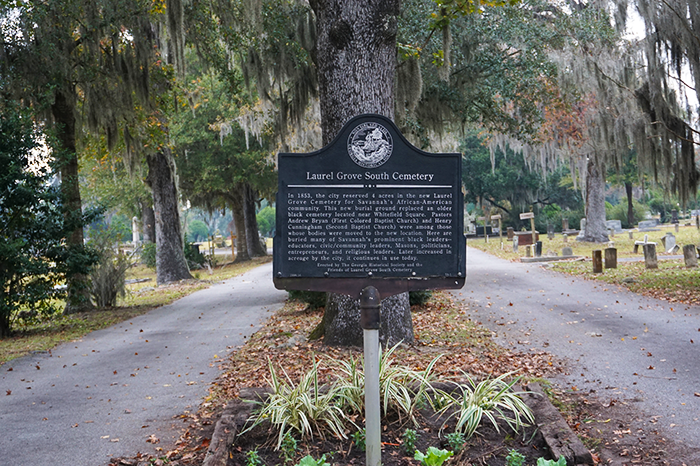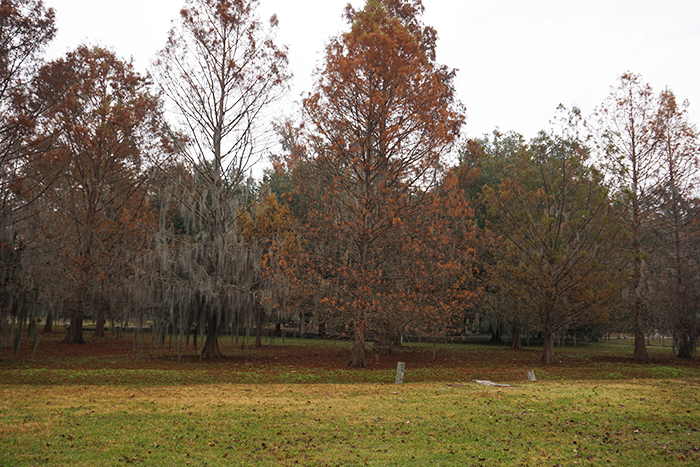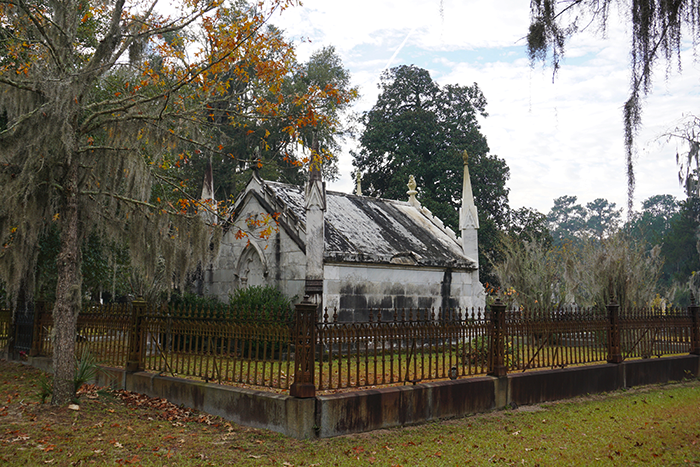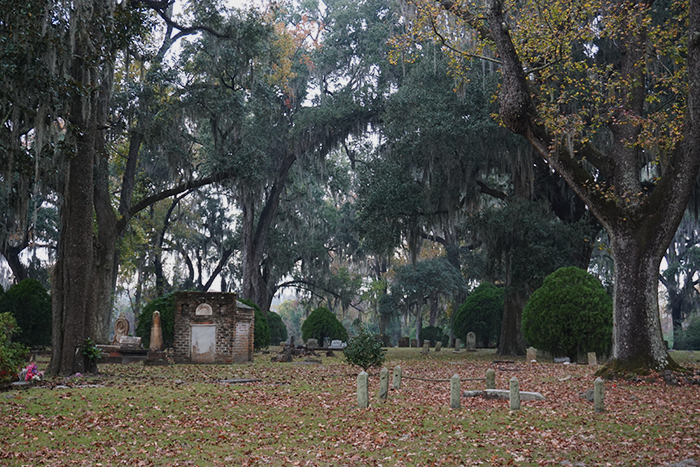You will see many fabulous trees in Savannah’s cemeteries. Each cemetery has its own rich history and the trees have had many years to grow into their natural shapes. Live oaks are wide and sprawling while magnolias grow tall and full. The sycamore can be spotted by its beautiful white bark and the hickory and ginkgo stand out in fall with their bright yellow leaves.
Bonaventure and Greenwich Cemeteries
Bonaventure Cemetery History and Oak Trees
Bonaventure Cemetery is located on the bluff of Savannah’s Wilmington River on 160 acres. There are many old oak trees in the cemetery. The oldest oaks, said to be over 250 years old, are near the American Legion field, towards the back. Park and walk the sandy paths under the moss-draped trees and enjoy the serenity. Not only do you see a variety of trees, but also azaleas and camellias that bloom winter through spring. In 1867 John Muir stayed in the cemetery during his Thousand Mile Walk and wrote, “The rippling of living waters, the song of birds…the undisturbed grandeur of the oaks mark this place…as one of the Lord’s most favored abodes of life and light.” More recently Bonaventure was featured in John Berendt’s 1994 “Midnight in the Garden of Good and Evil.” Author Conrad Aiken and songwriter Johnny Mercer are buried here.
What you will see: Large live oak trees, pecans, hickory trees, magnolias and hollies.
Greenwich Plantation and Cemetery History
Greenwich, once a plantation growing soya beans and tea, sits next to Bonaventure Cemetery and is accessed down a mile-long tree-lined driveway to the left of Bonaventure’s entrance. In 1897 a turpentine magnate, Spencer Shotter, bought the 65 acres and built a 3-story, 40-room mansion of brick and marble. In addition there was a pool and bath house, gardens servants’ accommodations and a yacht dock. In 1917 Dr. Henry Torrey and his family purchased the home. They had a staff of 18 running the 2nd largest private home in the US. It was the scene of many balls and movies. In 1923 it burned to the ground. The fountain, pictured below, is all that remains. As you walk through the property among the 200-year old oaks it is fun to imagine life as it was when these families lived here.
What you will see: Live oaks, magnolias, cedars, pecan, lacebark elm and holly trees.
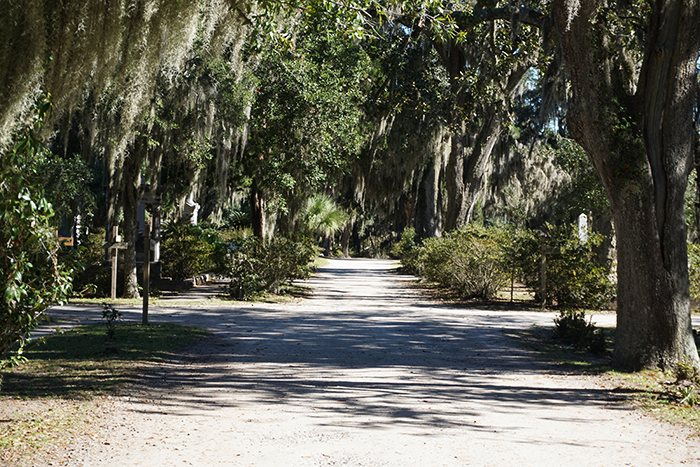
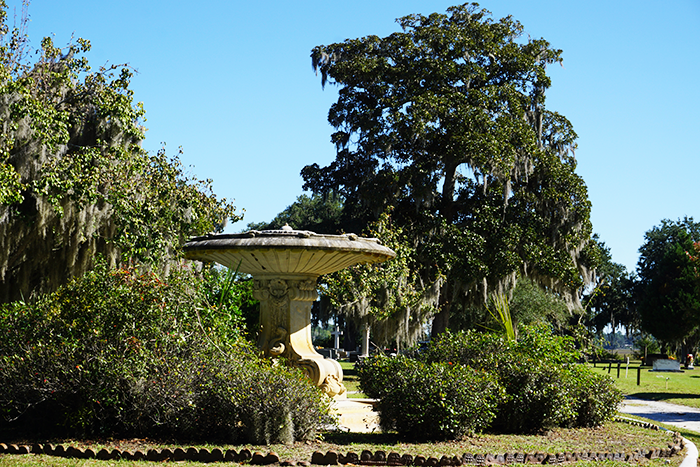
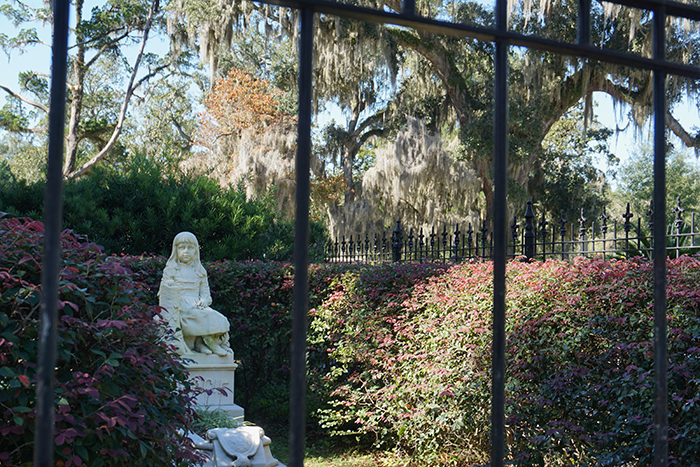
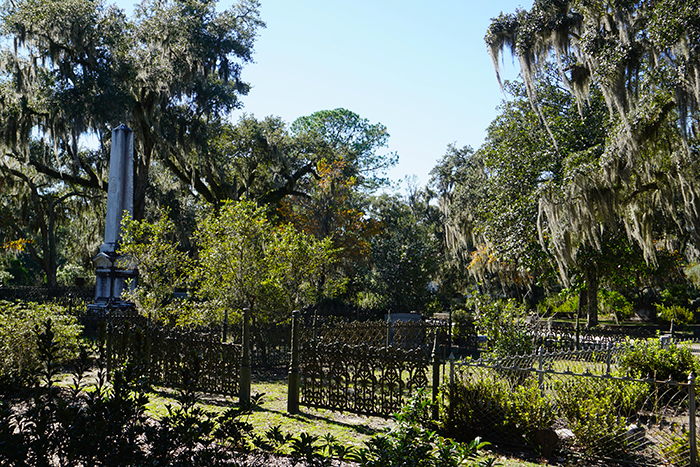
Colonial Park Cemetery
The Colonial Park Cemetery was established in 1750 when Savannah was the capital of Georgia. There are over 9000 graves, including 700 victims of the 1820 yellow fever epidemic. The cemetery closed to burials in 1853, so there are no Confederate soldiers interred here. However during Sherman’s occupation of Savannah in 1864 the park served as a temporary home to Union troops. The soldiers desecrated many of the graves. The cemetery, also used as the city’s dueling grounds until 1877 is said to be haunted.
Walking through the cemetery you see a variety of young and old trees, including ginkgo, magnolia, bald cypress, cedar, elm and oak.
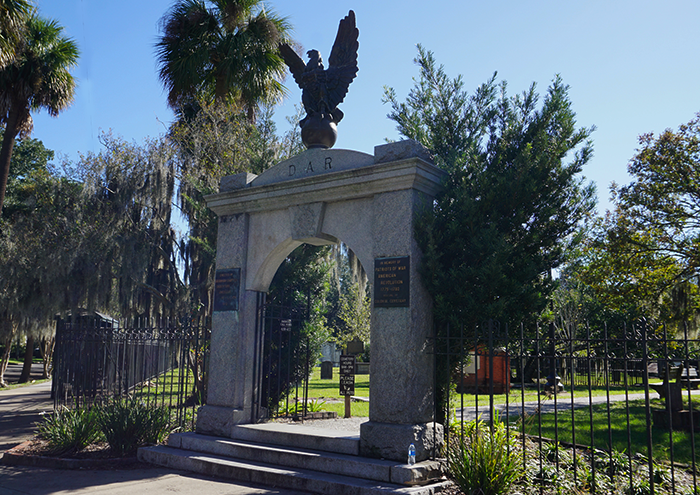
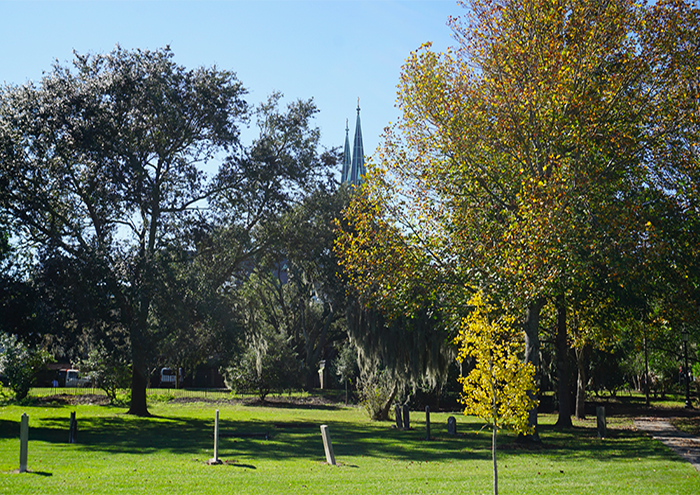
Laurel Grove Cemeteries, North and South
Laurel Grove Cemetery is named for the Laurel Oaks that originally covered the area. Divided into North and South sections, The North was designated for whites only while the South was reserved for slaves and free people of color. The cemeteries have two separate entrances but both are on the former Springfield Plantation. The city of Savannah purchased the former rice plantation in 1850 to use as a cemetery.
What you will see: live oak trees, laurel oaks, magnolias, cypress, pecan and tall sycamore trees.
Laurel Grove North History
Laurel Grove North has the largest collection of Victorian-Era cemetery architecture in the Southeast. Built on 67 acres it has a large Central green with winding roads. All the structures (Keeper’s House, Gazebo, Porter’s Lodge and Public holding vault) were built in 1853 and are historically significant. Look for wonderful examples of tall magnolias and cedars among the tombstones. The cemetery is on the National Register of Historic Places.
Laurel Grove South burial ground for slaves and free people of color
Laurel Grove South has been a very significant burial ground for slaves and free people of color. It is described as a historically significant site forAfrican American religion, education, civil rights and business according to the City of Savannah. It is a public park-like open space with lots of large trees. Of special interest is a grove of massive cypress trees in the wetland.
SCAD student Parker Stewart wrote in 2015 about the unique style of the material used in the construction of the gravestones and markers. You will not see marble or polished granite in Laurel Grove South. Instead you will see markers made with less expensive materials such as cement and brick. Commonly seen are cement headstones made from molds and colonial style box graves.
Notable people buried at Laurel Grove South
Reverend Andrew Bryan, born a slave in 1737 in Goose Creek, SC is chronologically the oldest person buried at Laurel Grove. He ministered to slaves working on the Savannah River and was beaten and imprisoned for his preaching. He eventually formed a congregation on Brampton Plantation and with the help of his former master’s son, William Bryan, purchased a lot for the current First Bryan Baptist Church. Bryan died a free man Oct. 6, 1812.
Two other notable Savannahians buried at Laurel Grove South: W.W. Law, civil rights activist and Jason Johnson, a.k.a. Camoflauge. The cemetery is on the National Register of Historic Places.
